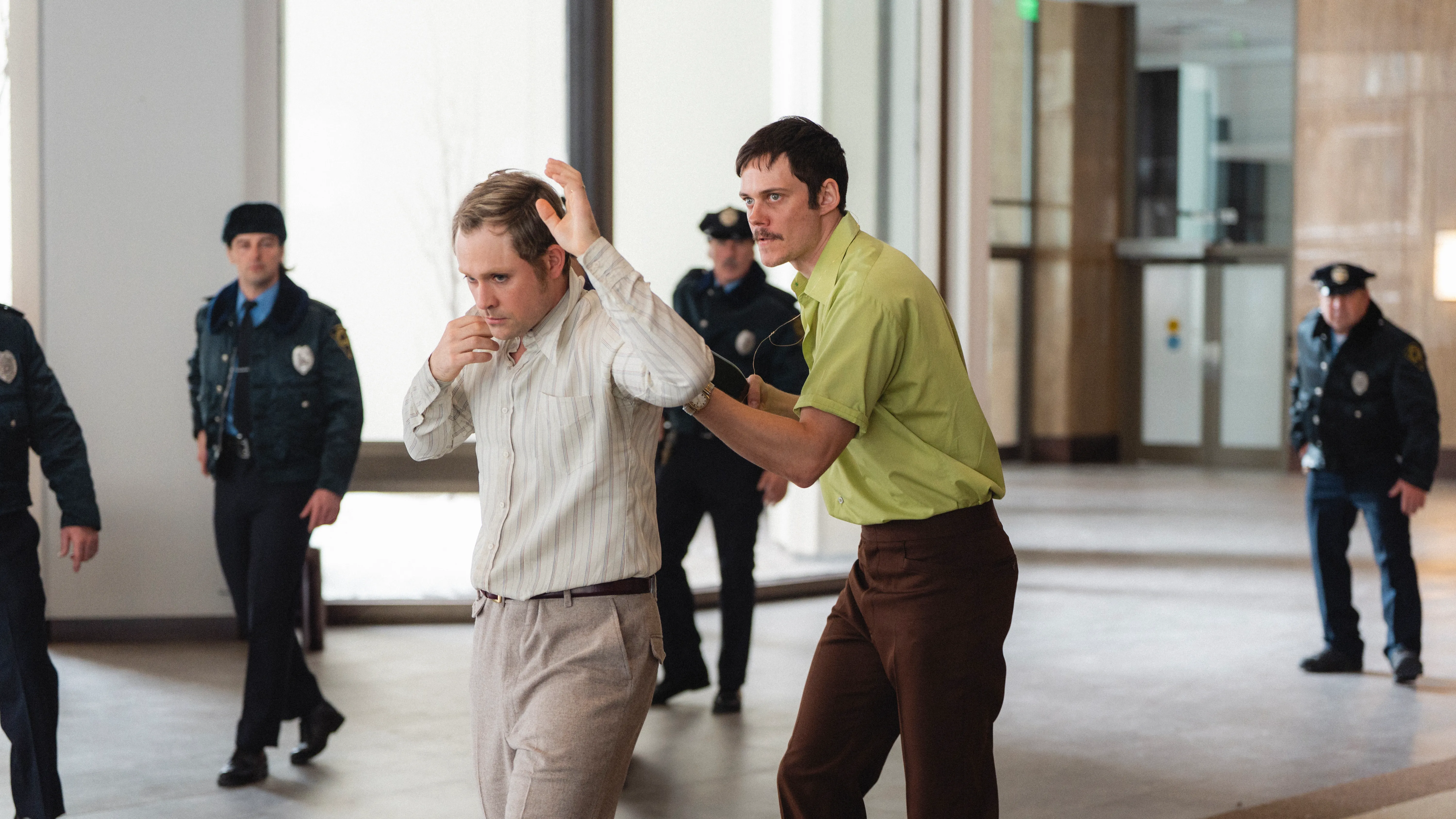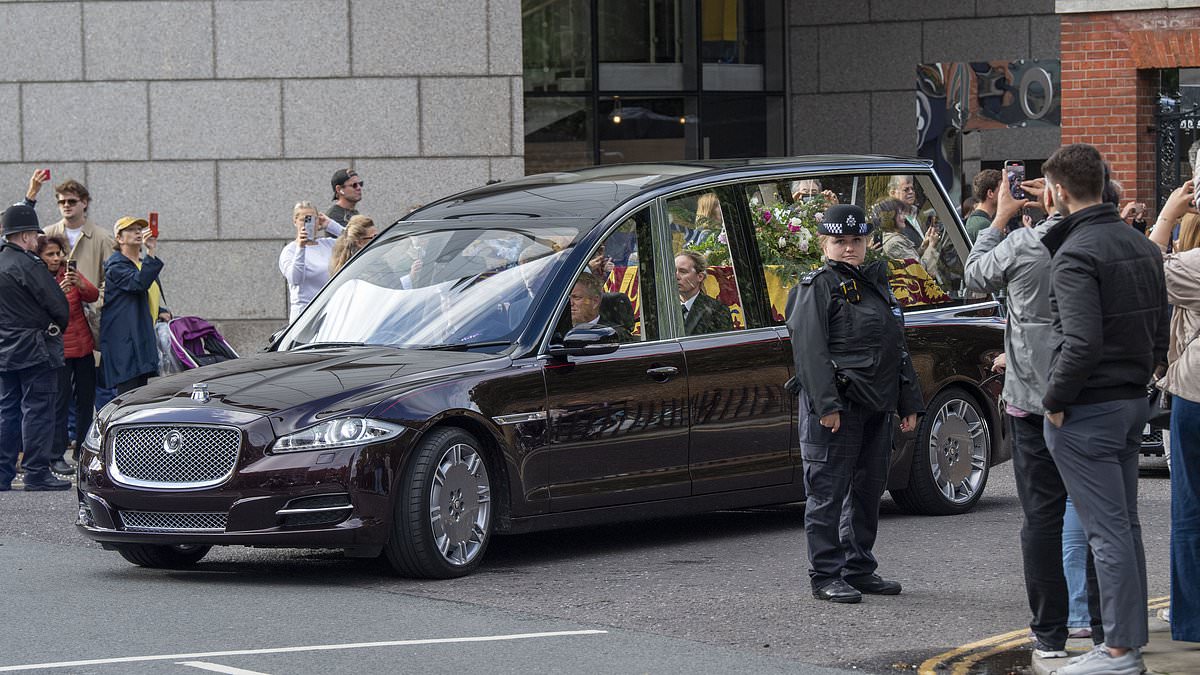By Corey Atad
Copyright gq

On February 8, 1977, a man named Tony Kiritsis walked into Meridian Mortgage in Indianapolis and took a meeting with Richard Hall, the son of the company’s founder, M.L. Hall. In Richard’s office, Kiritsis pulled out a shotgun with a wire attached, wrapped that wire around both his own neck and the mortgage broker’s, and rigged the gun to fire into his hostage’s head should he try to pull away. For 63 hours, Kiritsis held Hall hostage, demanding the clearance of his debt, a payment of $5 million, and an apology for what he perceived as a personal wrong done by these greedy bankers. The case, which grew into a media circus, is the subject of Gus Van Sant’s first new film in seven years, Dead Man’s Wire, which just had its premiere at the Toronto International Film Festival. All throughout, it was impossible not to think of Luigi Mangione and the assassination of UnitedHealthcare CEO Brian Thompson late last year, the ensuing manhunt, and Mangione’s disturbingly understandable ascension to folk-hero status.
Bill Skarsgård stars as Kiritsis in the film, which draws heavy inspiration from Sidney Lumet’s 1975 true-crime classic, Dog Day Afternoon, even recruiting that movie’s lead actor Al Pacino for a walk-on part as M.L. Hall. Dead Man’s Wire starts with Kiritsis about to enact his plan, and plays out largely as a nuts-and-bolts account of the hostage-taking. Over the course of the stand-off, which moves from the Meridian offices, out into the street, and eventually to Kiritsis’s apartment, we come to understand how he got to this place. After having bought a plot of land, hoping to lease it out to a retail operation like a grocery store, he’s failed to find anyone willing to make a deal. While missing mortgage payments, he believes he’s found proof that the Halls have been deliberately dissuading potential lessees in order to force a foreclosure, take over ownership themselves, and then turn around and sell it for a profit now that property values have risen.
Kiritsis is a wild character, twitchy and eccentric, and Skarsgård leans into that side of him, both to maintain an unnerving tension, but also for laughs; the film revels in the absurdities of the situation and the man at its center and sometimes edges closer to comedy than thriller. Kirstis is a huge fan of a local radio host named Fred Temple (played wonderfully by Colman Domingo), and begins communicating with him instead of talking to the police and negotiators from the FBI. Though he maintains his willingness to inflict violence throughout the film, Kiritsis maintains an oddly personable affect. He’s a good person, he keeps insisting—just a man who’s been pushed into a corner by an uncaring upper class elite, and who endeavors, in his way, to treat everyone, his hostage included, with a base level of humanity and respect.
There is no doubt—at least in the way Van Sant and Skarsgård depict him—that Kiritsis genuinely believes himself to be good and decent, but he’s also unreliable, constantly doubling back on himself, making rash threats, and performing in various ways for the public. It becomes clear he is motivated not merely by justice, but by a desire to be seen as a hero fighting for the little people. $5 million is a lot, but becoming the Robin Hood who brought evil bankers to their knees is priceless.
Van Sant hasn’t surpassed Dog Day Afternoon, but manages to keep the drama of Dead Man’s Wire compelling, deploying tactics like period-accurate recreations of live local news coverage, with Industry star Myha’la as an up-and-coming TV reporter. At times the whole situation seems to veer toward farce, but Van Sant constantly finds ways to remind the audience of the genuinely threatening nature of Kiritsis’s actions. As sympathetic as he often is, he’s also scary, a manifestation of the terrifying derangement produced by the unfeeling nature of capitalism. That he is constantly insisting he has no interest in getting married and having kids because his businesses are his children, only further complicates his attempt to play hero. He may be stomped on by the system, but other than a general desire to be treated like a human being, he’s no less invested than anyone else in how that system might ultimately benefit him.
This kind of ideological and moral morass is the real reason the Mangione case resonates so well with Dead Man’s Wire. As a theoretical act of resistance against forces in society amassing wealth at the expense of humanity, killing a health insurance company CEO has some animalistic logic. Ideologically, it might even seem to have surface-level merit. But by indulging in such violence, particularly as a lone gunman against the world, claims to any kind of consistent thought break down. Mangione’s inscrutable politics, evident in his manifesto and glimpses of his online presence, are mirrored in Kiritsis’s ultimately selfish act. He is at once sympathetic and not, a hero only in the most whitewashed, morally-simplistic sense of the word.
Where this really comes to the fore is in Kiritsis’s developing relationship with his hostage Richard Hall (played by former Stranger Things star Dacre Montgomery) over the course of the film. They never become exactly friendly, but a more honest kind of conversation emerges anyway as the hours and days wear on. Montgomery plays Richard with an unexpected level of complicated humanity. At once the jerk Kiritsis thinks him to be, and also a bit pathetic in relation to his heartless father, Montgomery accesses a middle ground of humane connection with his kidnapper. Constantly in a state of terror at his circumstances, but increasingly exhausted, Richard moves from sympathetic simpering to an almost catatonic desperation as his defenses break down.
This reality, in which “hero” and “villain” are essentially meaningless words, is the place Van Sant pulls the audience towards. On the one hand, Dead Man’s Wire is clear about the political and economic dynamics that would drive a person to the edge of a mad violent act, however carefully and sensibly planned. But it also depicts the ultimate folly of such an act, and though the film was in development long before anyone knew the name Luigi Mangione, its production occurred in the wake of the Thompson assassination, which no doubt filtered into the final film. That tension—between the desire for a new folk hero, and the dark, unpredictable realities of what such a thing entails—turns what is otherwise a decent, straightforwardly well-made crime movie into something that speaks perfectly to the current moment.



